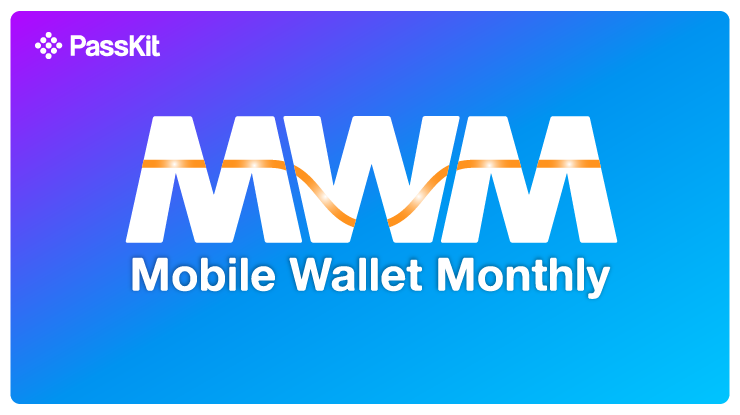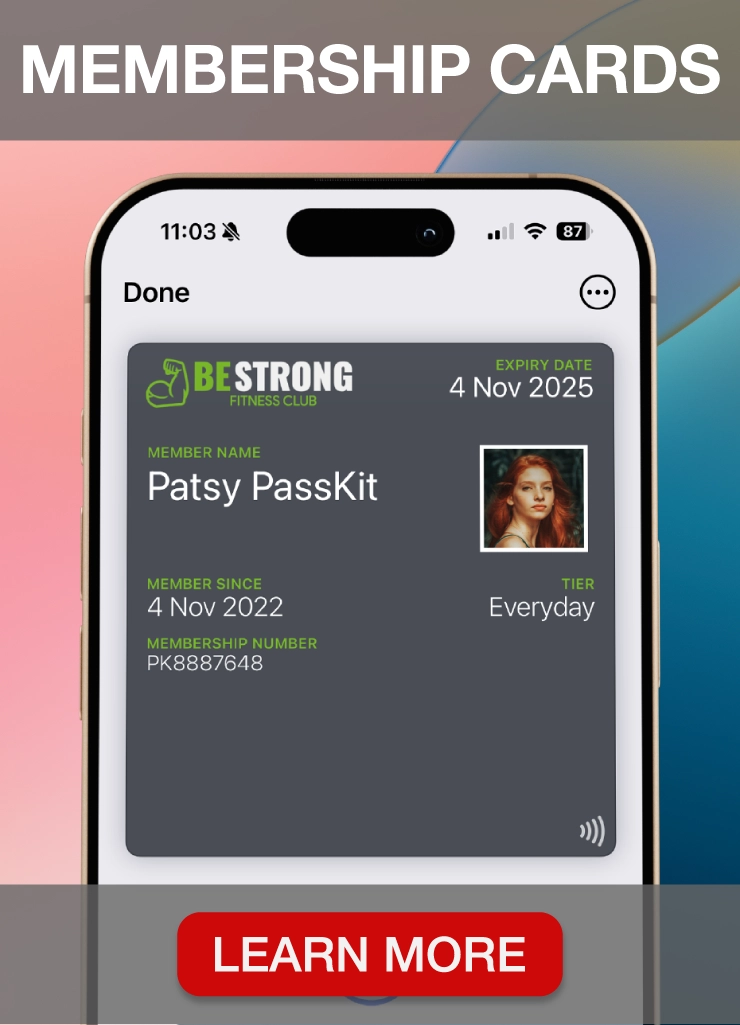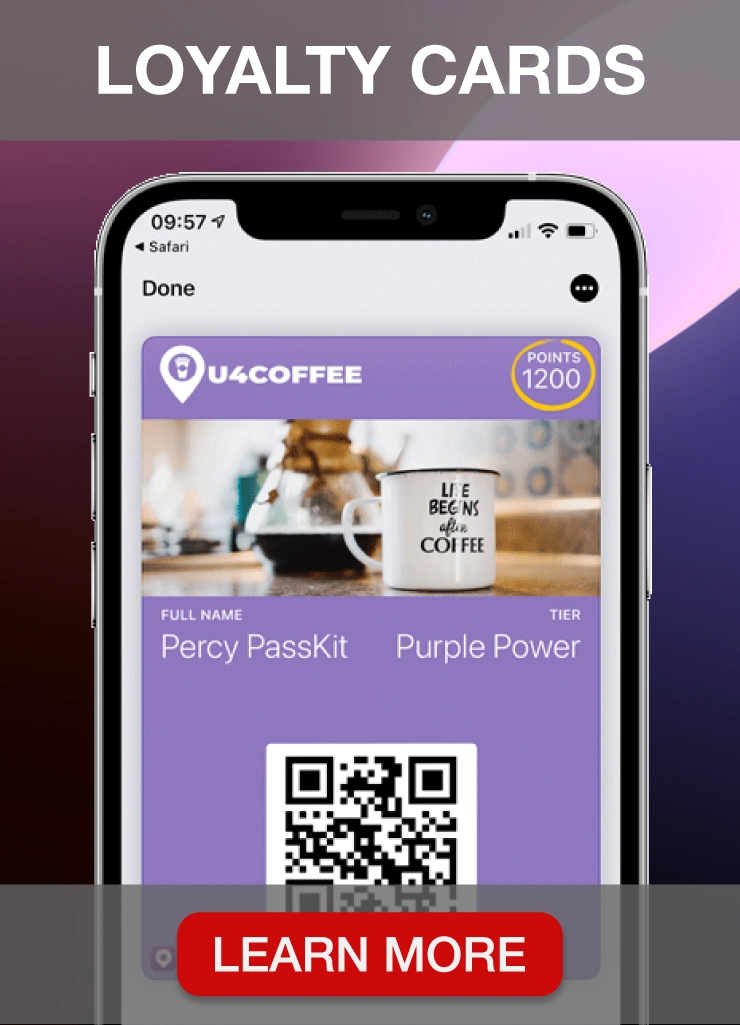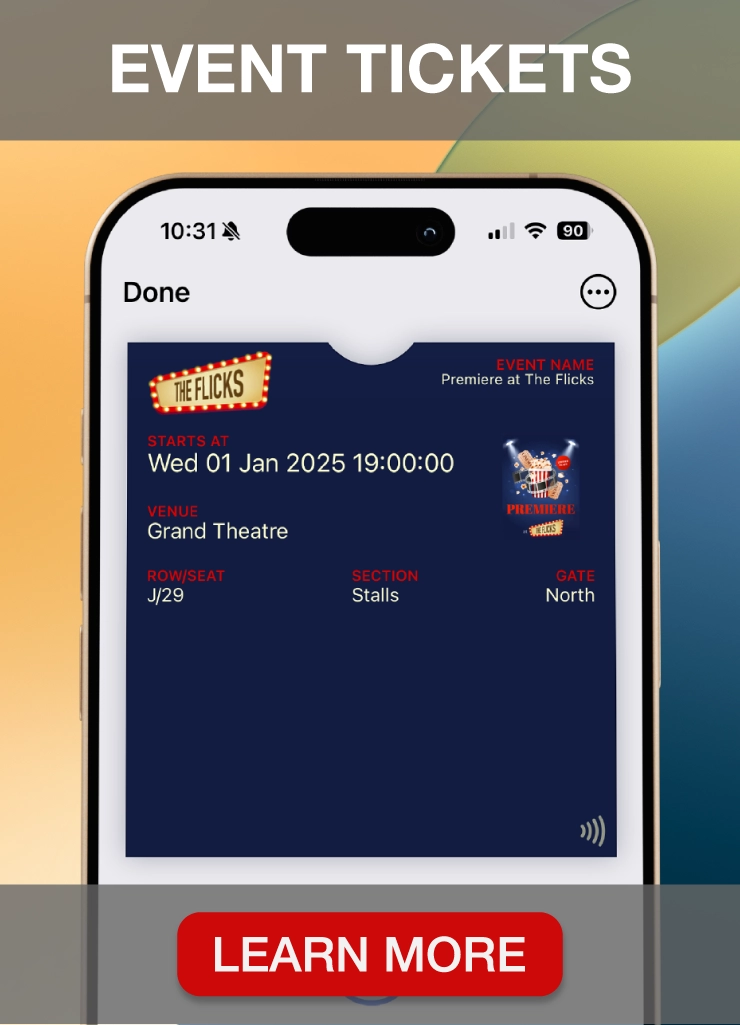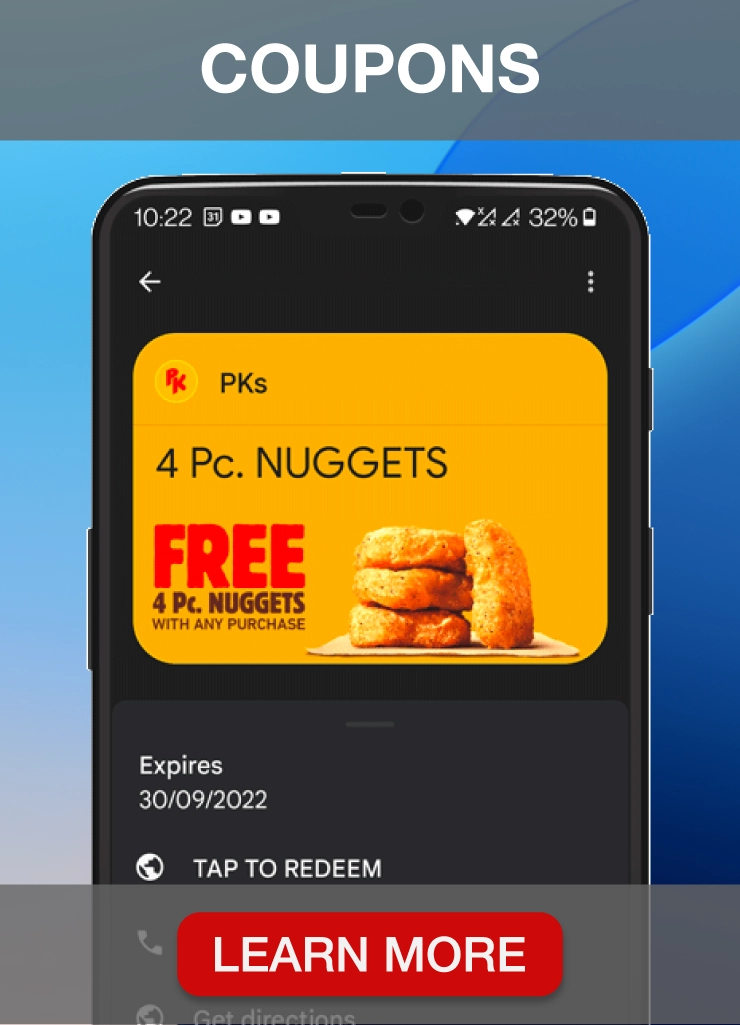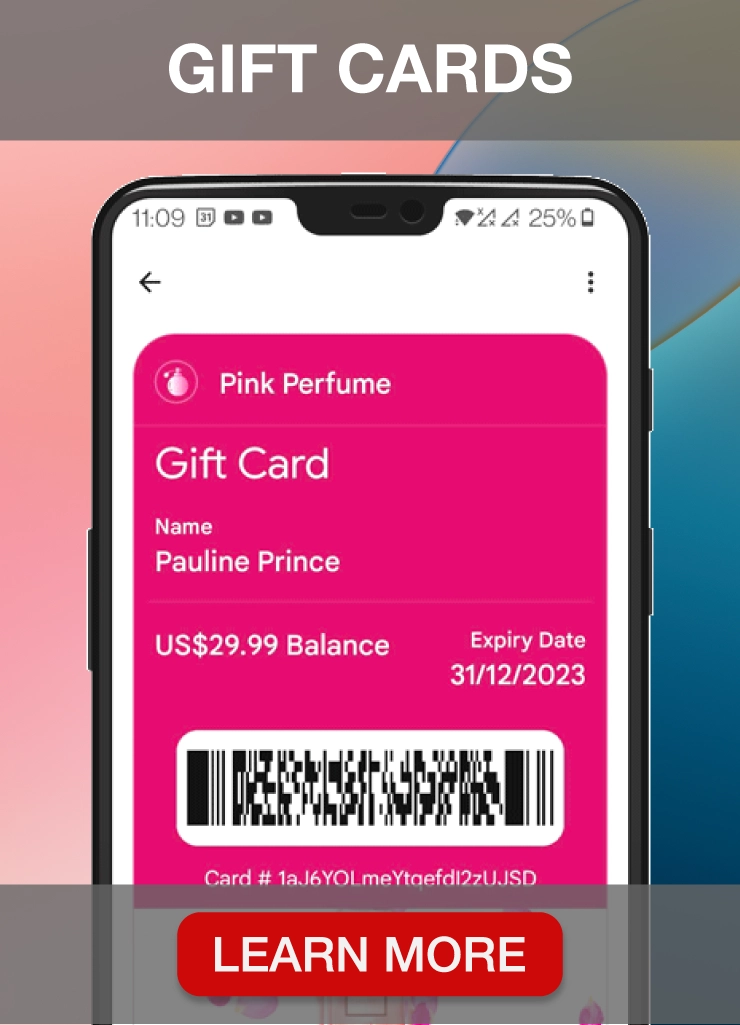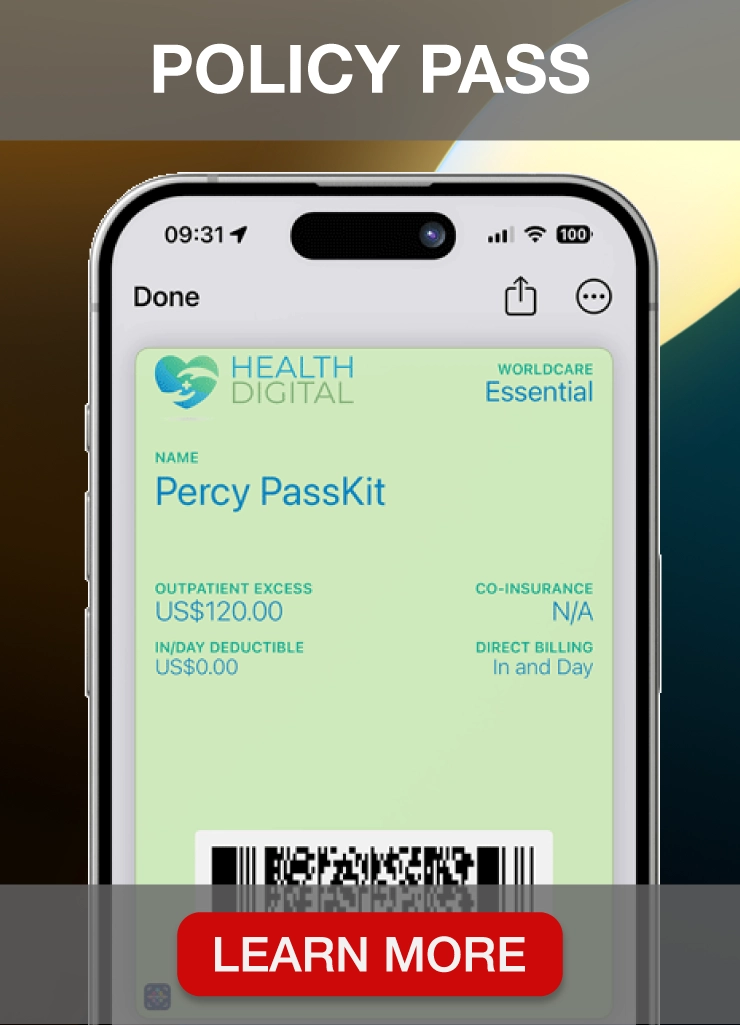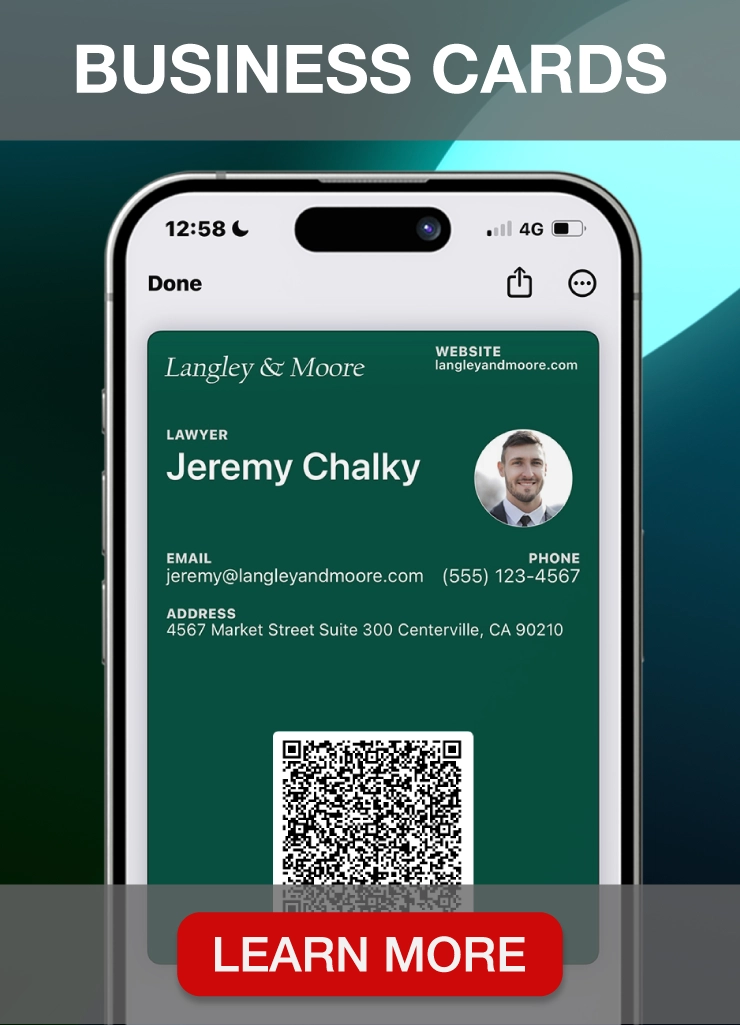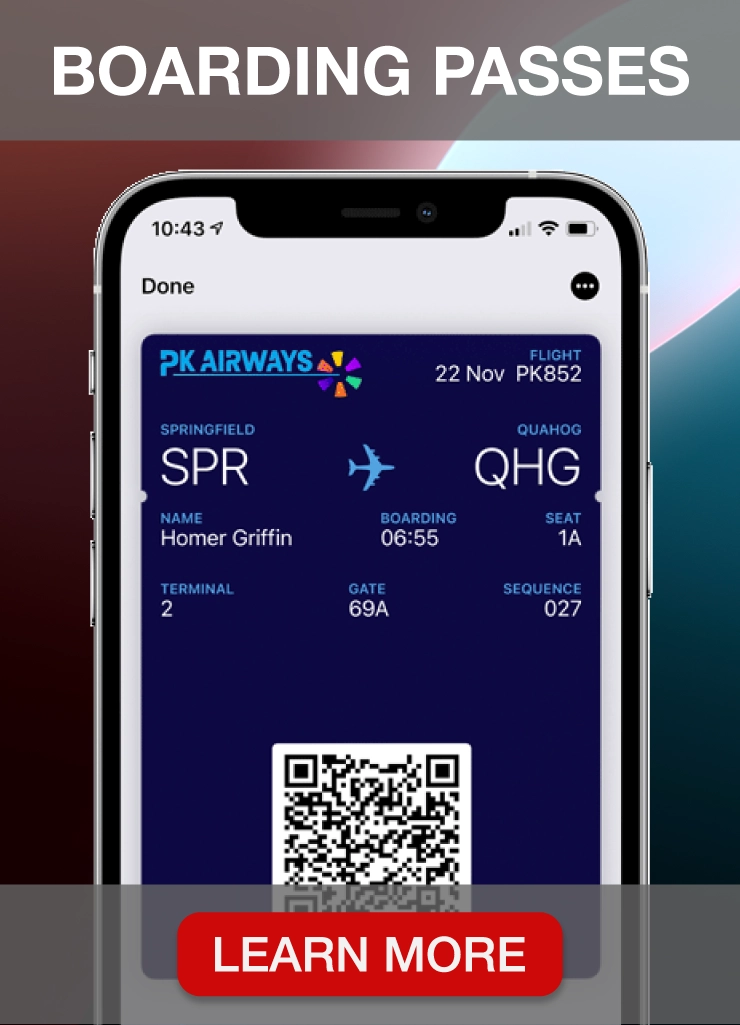The evolution of loyalty programs from traditional paper punch cards to data-driven, personalized strategies reflects the changing needs of modern customers.
Consumers now seek more than just a transaction. They want a unique experience and a meaningful relationship with brands that recognize and reward their loyalty.
To stay competitive, loyalty program owners must understand that innovative loyalty programmes go beyond discounts and freebies. They now incorporate gamification, personalized rewards, and seamless integration with mobile wallet technology.
To help you stay updated, in today’s article, we will share the top 15 loyalty program trends that can help transform occasional buyers into brand advocates, fostering a community of loyal customers.
We will also explain how you can use PassKit, our all-in-one customer loyalty software to seamlessly integrate these trends into your business.
The importance of loyalty programs
Loyalty programs help small businesses build strong customer relationships. By focusing your marketing and sales efforts on loyal customers, you can secure repeat sales and create brand advocates who can bring in new clients through word-of-mouth.
Your primary goal in designing your loyalty program strategy should be to improve customer retention. Research shows that increasing customer retention by just 5% can boost profits by 25% to 95%, making top-performing loyalty programs a fundamental business tool.
Here’s how a well-structured loyalty program can benefit your small business:
- Stronger customer relationships: By rewarding repeat purchases, you show appreciation, encouraging continued patronage.
- Improved customer data collection: Loyalty programs allow you to gather data about your customers’ purchase behaviors, enabling personalized experiences.
- Competitive advantage: Tailored rewards set your business apart, making it harder for competitors to lure away your customers.
When you decide to design loyalty program, consider these elements:
- Exclusivity: Offer unique perks accessible only to members of your paid loyalty programs.
- Personalization: Use the data you collect to provide personalized offers or communications.
- Engagement: Create touchpoints that encourage regular interaction with your clientele.
Always remember, your loyalty program reflects your brand. It should align with your values and appeal to your customer base. Keep your program dynamic and be responsive to customer needs and market trends to maintain its effectiveness.
Exploring the top customer loyalty trends this year
Let’s explore the top customer loyalty trends this year and how they are reshaping businesses’ interaction with their customers.
The rise of personalization in loyalty programs
Image source: Blogging Wizard
Personalization is taking center stage in customer loyalty trends. Loyalty programs are shifting from one-size-fits-all reward systems to those offering customized experiences.
Instead of generic rewards that are the same for every customer, businesses are now using insights from customer behavior, purchase history, and preferences to offer personalized rewards and experiences that are more relevant and appealing to each customer.
For example, customers who frequently purchase skincare products might receive loyalty points they can redeem for a complimentary skincare consultation or a discount. This increases the loyalty program’s perceived value for the customer.
The integration of mobile technology
Image source: TrueList
With mobile devices, customers can manage their loyalty points, receive real-time updates, and interact with brands from anywhere at any time.
The convenience of having a digital loyalty card on a smartphone means that customers are less likely to forget their cards and more likely to engage with the brand.
Mobile wallets, for example, can store digital loyalty cards, allowing customers to earn and redeem points or rewards directly from their phones during checkout.
This seamless integration can give companies a competitive edge by simplifying the customer experience and encouraging ongoing engagement with the brand.
It also allows for personalized notifications, such as alerts for new deals, reminders to use points before they expire, or recommendations based on past purchases.
The emergence of subscription-based brand loyalty
Image source: SubscriptionFlow
Unlike traditional points-based systems, where customers earn rewards based on the amount they spend, subscription-based premium loyalty programs offer a suite of benefits in exchange for a regular fee.
This model is akin to a membership club, where the emphasis is on providing continuous value through exclusive perks.
Subscription-based loyalty programs are compelling because they can create a predictable revenue stream for businesses and encourage customers to make their subscriptions worthwhile by engaging more regularly with the brand.
This model also allows for the collection of rich customer data, which businesses can use to personalize the customer experience further and increase the value of the subscription.
15 loyalty program trends to implement right now
Let’s explore 15 loyalty program trends you can implement right now to stay competitive and boost customer loyalty.
Omnichannel loyalty experiences
Image source: Zinrelo
Creating an omnichannel loyalty experience means ensuring that customers receive a consistent and cohesive experience across all touchpoints with the brand.
This strategy requires integrating various shopping platforms and channels, including brick-and-mortar stores, online websites, mobile apps, and social media platforms.
The goal is to allow customers to earn points, receive personalized offers, and quickly redeem rewards, whether shopping in person, browsing online, or engaging through a mobile device.
AI and machine learning for enhanced personalization
Image source: Master of Code Global
AI and machine learning technologies analyze customer data, including purchase history, browsing behavior, and preferences. You can use this data to predict future behavior and create highly personalized rewards and communications.
For example, a loyalty program might use AI to suggest products that customers are likely to be interested in or to offer them a special discount on their birthday.
The technology can also identify the optimal time to engage with the customer or the most effective type of reward for each individual.
Emphasis on experiential rewards
Image source: Xoxoday Blog
Experiential rewards focus on providing unique and memorable experiences that create an emotional connection between the customer and the brand rather than just offering discounts or material goods.
These experiences could range from exclusive events to personalized services or opportunities that customers cannot easily access elsewhere.
For instance, a loyalty program might offer a cooking class with a celebrity chef, a behind-the-scenes tour of a popular event, or a private shopping session with a stylist.
Gamification elements
Image source: The Tech Report
Incorporating gamification into a loyalty program involves using game design elements in non-game contexts to enhance customer engagement and enjoyment.
It could include earning points for completing challenges, unlocking achievements, competing on leaderboards, or receiving badges for specific actions.
These elements make participation in the loyalty program more interactive and fun, increasing customer engagement and loyalty.
Sustainable and ethical rewards
Image source: Retainful
With a growing consumer focus on sustainability and ethical practices, loyalty programs now offer rewards that reflect these values. It could mean providing points for recycling, discounts for purchasing eco-friendly products, or contributions to charitable causes in the customer’s name.
By aligning the loyalty program with social and environmental initiatives, brands can demonstrate their commitment to making a positive impact and resonate with like-minded customers.
Dynamic tiered rewards systems
Image source: Antavo
Dynamic tiered rewards systems are loyalty programs that offer different rewards based on customer engagement and spending. Unlike static tiers, dynamic systems evolve and adapt to individual customer behavior over time.
It means that as customers interact more with the brand, their tier status and corresponding benefits can change to match their preferences and spending habits better. It incentivizes customers to engage more and provides the company with valuable insights into customer behavior.
For example, an airline loyalty program may upgrade a customer to a higher tier with additional benefits such as priority boarding or lounge access based on their frequent flier status and accumulated miles, which can change dynamically as the customer flies more often.
Value-added partnerships
Image source: WordStream
Value-added partnerships involve teaming up with other businesses to offer additional benefits to loyalty program members. These partnerships are typically between complementary brands and can provide members with a broader range of rewards and experiences.
For instance, a credit card company might partner with hotels and car rental services to offer its customers exclusive discounts and upgrades, adding extra value to being a cardholder beyond the basic credit card rewards.
Instant rewards and gratification
Image source: Tailor Gomez
Instant rewards cater to the customer’s desire for immediate gratification. Instead of waiting to accumulate many points or reach a certain spending threshold, customers can receive smaller rewards instantly after purchasing or performing an action.
It could be as simple as a discount on their next purchase, bonus points added to their account, or a free item.
For example, a coffee shop might offer a free drink after purchasing five drinks, with each purchase immediately reflected in the customer’s loyalty reward card.
Community-focused programs
Community-focused programs build a sense of belonging and purpose by aligning the loyalty program with local communities and causes that customers care about. It could involve supporting local events, charities, or initiatives.
By participating in the program, customers feel they are contributing to their community, which can enhance their emotional connection to the brand.
A grocery store chain, for example, might offer loyalty points when customers purchase products from local farmers or producers. This would simultaneously support the local economy and reward customers.
Hyper-localized offers
Hyper-localized offers involve tailoring marketing and rewards to customers’ tastes, preferences, and behaviors in a specific geographic area. This approach can make offers more relevant and appealing to customers, as they are based on local data and insights.
For instance, a restaurant chain might use customer purchase data to identify popular menu items in different regions and then offer targeted promotions or limited-time offers that cater to those specific preferences.
This could mean promoting a special seafood dish in coastal areas while highlighting a hearty meat special in the Midwest.
By localizing offers, brands can demonstrate their understanding and appreciation of their customers’ unique local culture and tastes, significantly improving the customer experience and encouraging loyalty.
Enhanced data security and privacy
Image source: Varonis
Since data breaches are common, customers are increasingly concerned about how companies use and protect their personal information.
Increased data security and privacy within loyalty programs involve implementing advanced safety measures, such as encryption, secure data storage solutions, and regular safety audits to prevent unauthorized access.
In addition, ensuring compliance with data protection regulations such as GDPR or CCPA is crucial. For example, a retail company could use end-to-end encryption for all data transactions within its loyalty program, ensuring that customer data such as names, addresses, and purchase histories are secure.
Additionally, the company could offer transparent privacy policies that explain how customer data is used and give customers control over their information, building trust in their loyalty marketing.
Loyalty Programs as a Service (LPaaS)
Loyalty Programs as a Service (LPaaS) is a cloud-based solution allowing businesses to outsource their loyalty programs’ complex technical aspects.
By using LPaaS, companies can leverage the expertise of tech providers to manage customer data, track reward redemptions, personalize marketing efforts, and more, often with the benefit of advanced analytics and customer insights.
An example of LPaaS in action could be a small e-commerce business using a third-party platform to create a custom loyalty program without in-house development. This platform could handle all program aspects, from enrollment and point tracking to reward management and customer communication.
Social media integration
Image source: LocalIQ
Integrating social media into loyalty programs means rewarding customers for engaging with the brand on platforms like Facebook, Twitter, Instagram, and TikTok. Customers can earn points or rewards by sharing content, posting with specific hashtags, or following the brand’s social media profiles.
For instance, a beauty brand might offer loyalty points to customers who post a picture with their product and a campaign-specific hashtag. This would motivate customers to engage with the brand and turn them into brand ambassadors on social media, expanding its reach and influence.
Augmented Reality (AR) experiences
Image source: Finance Online
Augmented Reality (AR) can enhance loyalty programs by creating immersive and interactive experiences that are both engaging and memorable.
For example, a furniture retailer could use AR to allow loyalty program members to visualize how products would look in their homes before purchasing. Through the brand’s app, customers could scan a catalog or product tag with their smartphone to see a 3D furniture model superimposed onto their actual space.
Customers who use the AR feature might receive additional points or special offers as part of the loyalty program. This could encourage them to interact with the brand in an innovative way and provide a unique shopping experience.
Voice-activated loyalty interactions
Image source: DemandSage
Voice-activated loyalty interactions leverage the convenience of voice recognition technology to enhance the customer experience. It allows customers to check their points balance, search for rewards, or make purchases using simple voice commands.
For example, a grocery store chain could enable customers to add items to their shopping lists, order home delivery, and earn loyalty points through voice commands. This hands-free convenience can make the loyalty program more accessible and user-friendly, particularly for multitasking or visually impaired customers.
Incorporating these trends into your loyalty program can significantly improve the customer experience by making it more interactive, convenient, and secure. As technology evolves, brands adopting these innovative strategies can stay ahead of the curve and maintain strong, trust-based relationships with their customers.
Implementing loyalty program trends with PassKit
PassKit’s digital rewards platform is a versatile solution that helps businesses adopt the latest loyalty program trends across various industries, including retail, hospitality, travel, and entertainment.
With its rewards program for small businesses, PassKit enables companies to easily design, manage, and optimize customer incentive programs.
- Multi-industry coverage: PassKit serves businesses across multiple industries, allowing them to create tailored loyalty programs that resonate with their specific customer base. Whether you’re looking to enhance customer retention in a retail setting or increase guest loyalty in hospitality, PassKit provides the tools necessary to build a program that aligns with your business objectives.
- Pass Designer: The Pass Designer feature offers a range of templates that comply with Google and Apple guidelines, making it simple to design functional and on-brand loyalty program cards, digital membership cards, and coupons. The intuitive drag-and-drop interface ensures that creating professional and visually appealing loyalty customer cards is straightforward and aligns perfectly with your branding.
- Loyalty program management: PassKit’s loyalty program app delivers a complete solution for personalizing your customer loyalty programs. You can establish and tailor points reward system, and compensation structures, track customer activity with loyalty business cards, and manage member profiles from one central location, ensuring your loyalty program adapts to customer behavior and preferences.
- Mobile wallet APIs and SDKs: PassKit makes it seamless to integrate rewards programs with popular platforms like Apple and Google Wallet. It allows customers to conveniently store and manage loyalty cards for business and rewards on their mobile devices, fostering increased engagement and usage.
- PassReader scanning app: This app for iOS and Android enables businesses to validate loyalty cards quickly and track redemption activity, ensuring a smooth and efficient experience for staff and customers.
But that’s not all. Our loyalty platform provider lets you enjoy additional benefits:
- Automated rewards: By integrating with marketing automation tools, PassKit allows you to set specific rules and triggers that automatically reward customers. It keeps them engaged and encourages repeat business without the need for manual intervention.
- Multichannel distribution: PassKit’s multichannel distribution capabilities allow you to easily share e-gift cards, digital tickets and similar passes through offline and online channels. The streamlined process for adding these cards to mobile wallets with just a tap enhances the customer experience and engagement.
- Push notifications: Personalized push notifications keep customers informed and engaged with updates, promotions, and offers, directly contributing to active participation in your loyalty program. PassKit lets you send these notifications directly to your customers’ mobile devices, ensuring they stay connected and aware of the latest benefits and opportunities.
- Location-based alerts: Using geolocation technology and location-based marketing, PassKit allows you to send targeted notifications when customers are near a specific location. This feature is perfect for driving foot traffic and in-store visits by sending timely offers or reminders that customers find relevant and enticing.
- Real-time analytics and reporting: To optimize your loyalty programs effectively, you need access to robust data on customer engagement, redemption rates, and overall program performance. PassKit’s customer loyalty analytics empower you to measure the effectiveness of your strategies and make smart decisions to boost your loyalty initiatives.
- Multi-language support: PassKit’s multi-language support ensures you can provide loyalty passes and cards in various languages, offering a personalized experience that increases customer satisfaction and loyalty.
By leveraging PassKit’s all-in-one platform, you can embrace the future of loyalty programs, offer your customers a sophisticated, secure, and engaging loyalty experience and foster brand loyalty.
Start a 45-day free trial now and take the first step towards building a more loyal customer base.
Final words about loyalty program trends
Loyalty program trends are rapidly changing, driven by technological advancements and altering consumer expectations. Today’s loyalty programs are no longer just about collecting points but about creating personalized, engaging, and seamless customer experiences.
Integrating mobile technology, data analytics, and omnichannel strategies has become essential for businesses to nurture genuine loyalty and long-term customer relationships.
Brands that leverage these trends through innovative platforms like PassKit can offer more than just rewards; they can deliver memorable experiences that resonate with customers on a personal level.
Adopting features such as mobile wallet integration, automated rewards, and location-based alerts ensures that your loyalty program is relevant, convenient, and meets customer expectations.
As we look to the future, the brands that will thrive are those that understand the importance of loyalty as a two-way relationship that rewards both the customer and the business.
Start a 45-day free trial with PassKit and create loyalty programs that drive sales, create brand advocates, and build a lasting customer base.

